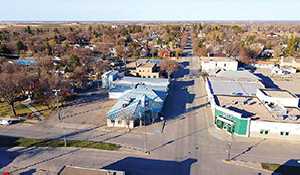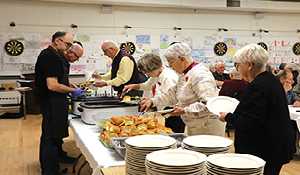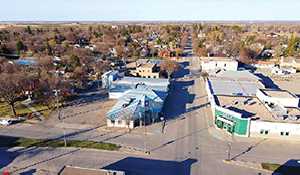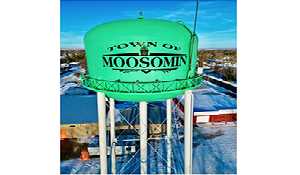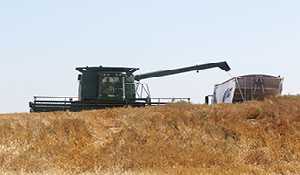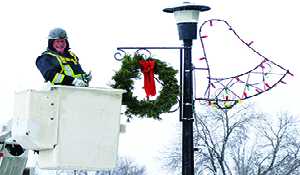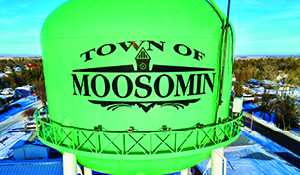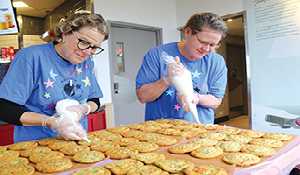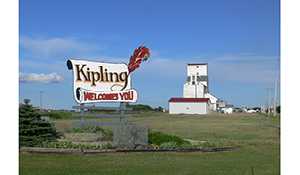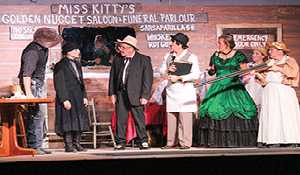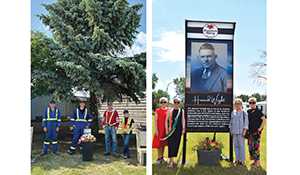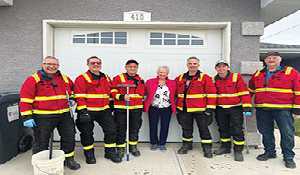Crops okay, but rain will be needed
July 25, 2017, 2:12 am
Kara Kinna
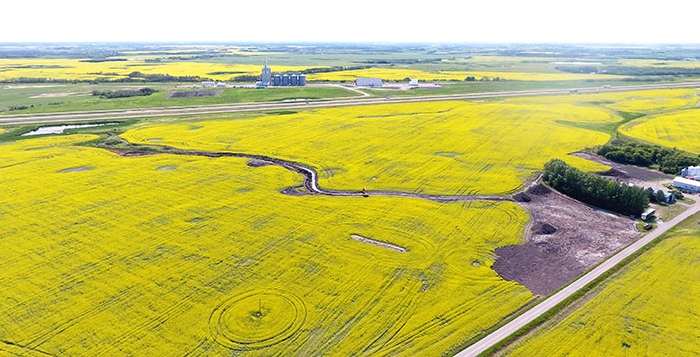

As of last week, crops in the Moosomin area were looking okay, but rain will be needed by the end of July in order to make for a healthy harvest.
Outside the Moosomin area, things aren’t looking so great.
“We’re kind of in an interesting bubble in the core narrow area of Moosomin and southeast,” says Wendy Leeds, an agronomist with Sharpe’s Soil Services in Moosomin. “We actually had a couple more rainfalls than even if you go to, say, Rocanville. It’s that narrow, and even west (isn’t as wet). As soon as you get to around Wapella they didn’t have the same sort of thunderstorms that rolled through here. So if you look at sort of Moosomin proper, a bubble around Moosomin and to the south, we had a touch more rain and things are looking okay.
“We will need a rainfall in the next two weeks to help with fill. The beauty of the crops not being spoonfed moisture is that they were able to root—there is lots of moisture underground. The crops were able to root into that moisture, so at this point I’m not noticing large stress in the field. I’m not seeing wilting during the day.”
Leeds says the smoke that started to roll into the area from the wildfires in B.C. last week has help moderate temperatures and ease stress on the crops.
“A little bit more moderate temperatures with the smoke now is helping, and the fact that they are in a bit of moisture, so that they are able to hold their own,” she says.
“If you do get outside of this little bubble—Rocanville, Whitewood, Wapella—they are showing a bit of stress. We are seeing quicker flowering through the canola, so things like that will affect yield in the end.
“On the flip side, our warm season crops—corn and soybeans—love this and they desperately needed this warmer weather to perk up. They weren’t looking as happy because of the cool June.
“I still think our cereals look okay. Oats definitely do not like the warm weather, they burn quite quickly. Oats probably are the worst. Our wheat seems to be hanging on but I have noticed in the fields now it’s starting to get a bit stressed. And canola same thing—warm weather with canola is horrible for flower blast, so the flower won’t stay on as long, so then they don’t have the opportunity to pollinate as much and you end up having skips of pods or just smaller pods.”
What kind of weather would be ideal?
“A soaking rain for two days that gives us an inch or inch and a half to help with fill,” says Leeds. “In reality yield is set but fill and quality would be really helped with a rain.
“I still think we’re going to be average. And we might even be pleasantly surprised in some crops if we get a rain. I’m still optimistic.
“If we don’t get rain in the next few weeks we will start to see things suffer. So your fill won’t be the same. If the kernels aren’t as plump it affects yields, if you have plumper kernels it’s heavier, it ends up putting more bushels in your tank. Soybeans absolutely need a rain to fill or they will not be happy campers. They’re big seeds so they need to plump up. They are loving this weather right now but they will need a rain by the end of July if they are going to have any sort of yield potential.”
John Van Eaton farms in the Maryfield area. He says his crops are looking good.
“The wheat and barley look good. Our pulse crops look good. The canola looks okay. I think it looks average or maybe slightly better than average,” he says.
“If the rest of the month stays warm and dry it will probably hasten the ripening. I would say where we are sitting right now is about average. We’ve been fortunate. We’ve caught a couple of pretty nice showers—a half inch or three or four tenths—where other places got just a trace, so that has kind of helped the crops hang on a bit and especially the pastures.
“Right at our place we are sitting pretty good for moisture yet.”
The Maryfield area has struggled with too much moisture the last few years, but Van Eaton says this year seems more normal.
“I have no idea what normal is any more but I think we are kind of back to normal,” he says with a laugh. “We’re not desperate for rain yet. It’s nowhere near close to what it was the last three years for wetness in the field.” M?nim üçün bukmeker kontorunu seçm?kd? vacib amil rahat depozit v? pul ç?xarma üsullar?n?n mövcudlu?udur. IN https://pinup-azerbaycan.com/qeydiyya/ ?m?liyyatlar? asan v? sür?tli ed?n kriptovalyutalar da daxil olmaqla çoxsayl? öd?ni? variantlar? m?ni xo? t??ccübl?ndirdi. Pin-Up depozit v? pul ç?xarma prosesini sad?l??dir?r?k istifad?çil?rin? maksimum rahatl?q t?klif edir.
Despite his crops being okay, Van Eaton says a rain could be used.
“If we could order it up I would say we would take, in about a week to 10 days, an inch of rain and then temperatures in the mid to high 20s and just let us get this crop in the bin.”
Glen Crosson, who farms near Welwyn, says his crops are also looking okay although his canola is showing some heat stress and his soybeans need rain.
“We could use a rain like most people,” he says. “We’ve had a few little rains that have kept us up until now. The canola is losing flowers because of the heat. It will affect the yield—the longer it flowers usually the higher the yield. The soybeans really need some rain.
“Other than that it’s an average crop coming in so far.”
Crosson is also growing wheat and barley.
“The barley we will probably be combining by the second week of August maybe. They are both filling heads at the moment.
“We got seeding earlier and they started to run out of moisture a bit so that is pushing maturity.
“If we could get two half inch rains that would just be perfect.”
Neil Weatherald has wheat and canola planted between the Moose Mountains and Wawota. He says his crops are looking good.
“They look decent. We could use a rain but we’re not desperate for rain,” he says. “The canola’s not great but it’s still going to be a crop.
“It was too wet earlier on and that’s why the canola suffered early. It isn’t going to be a bumper crop by any means but there will be a crop there.”
Weatherald is predicting that his harvest will start around mid August.
“I’m thinking by the middle of August we’ll be desiccating wheat and possibly swathing canola. So another three to four weeks I would think. But then again it’s all weather dependent. I don’t make predictions very often because you never know.
“An inch of slow rain would be perfect right now and then some sunshine and 25-degree days. That’s probably what everyone else wants, even the people who aren’t farmers,” says Weatherald with a laugh.
“We don’t need a big storm. We don’t need one or two inches of rain in a hurry because it will flatten everything. So a nice gentle rain would be good. We’re still going to have a crop without it.
“We’ve been fortunate. We’ve had a few showers go through here so we’re not as dry as some areas. Even three or four miles south of us missed a half an inch that we got recently, so it’s kind of hit and miss. Right where we are, it’s decent.”
John Harrison, who farms right by Moosomin, is growing canola, soybeans, barley, and, for the first time, quinoa. He says his crops look good.
“For the most part they are pretty good, everything has good potential. It just depends on the weather now. If we get another good shot of rain everything should be pretty good,” he says.
“The quinoa will be harvested later, in mid to late September, and barley will be another month, probably mid August I would think, and the canola will be after that.”
He says the crop maturity is close to average for this time of year.
As for weather, what does he need?
“Warm, but not too hot,” he says. “We need 25 degrees and a nice gentle rain would be good. We don’t need a thunderstorm. Just a nice gentle half inch of rain would be good.”
He says he’s expecting an average harvest.
“Average or maybe some of it a bit better,” he says. “Some of the canola is a bit patchy and thin but it seems to be filling in now. The cereals (in the area) look really good—the wheat and the barley.”











